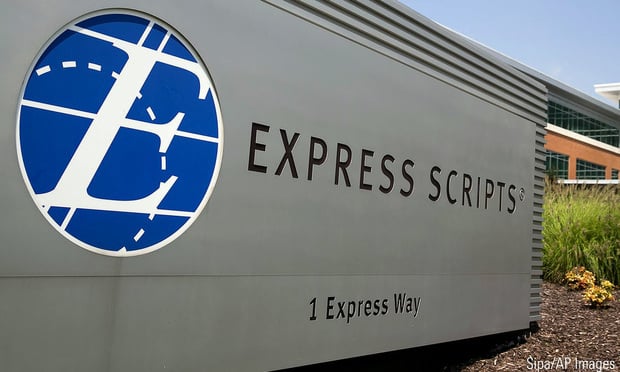1) Unemployment stuck at 9 percent

Bleak figures released Sept. 1 from the Office of Management and Budget predict unemployment will remain at 9 percent as President Barack Obama dives into his re-election campaign.
A day later, a dismal jobs report – the worst in 11 months – showed employers stopped adding jobs in August and payrolls were unchanged.
Recommended For You
"Labor Day is supposed to be a celebration," Sean Snaith, an economist at the University of Central Floriday told the Associated Press. "This report was more like an obituary."
(Photo: Crowds of job-seekers wait to enter a job fair at Crenshaw Christian Center in South Los Angeles, Wednesday, Aug. 31, 2011. AP Photo/Reed Saxon)
2) Obama tackles jobs

According to the Associated Press, the White House says President Barack Obama hopes that when Congress returns this coming week from its summer break, lawmakers will share his sense of urgency in taking steps to create jobs and help the economy.
The president will make a prime-time speech on Sept. 8 to a joint session of Congress. Obama is expected to include talk on infrastructure spending, and requests for an extension of unemployment benefits and the payroll tax.
(Photo: President Barack Obama walks to the Rose Garden of the White House in Washington, Wednesday, Aug. 31, 2011, where he urged Congress to pass a federal highway bill. AP Photo/Carolyn Kaster)
3) Wisconsin lawmakers survive recall challenges

In August, six GOP Wisconsin lawmakers fought to survive recall challenges stirred by backlash against GOP Gov. Scott Walker and his move to strip public employee unions of most collective bargaining rights. Democrats succeeded in taking two Wisconsin state Senate seats away from Republican incumbents but fell one short of what they needed to seize majority control of the chamber.
The standoff was a forewarning to lawmakers that a fight for union rights is about to get heated going into the next election cycle. More than $31 million was spent on the recalls, according to the Associated Press, largely from outside conservative groups, unions and others.
(Photo: Union supporters cheer as Rev. Jesse Jackson addresses a Martin Luther King rally at the state Capitol in Madison, Wis., Monday, April 4, 2011. Thousands of union protesters rallied on the steps of the Capitol on the anniversary of King's death. AP Photo/Andy Manis)
4) AFL-CIO wants stronger political clout

The AFL-CIO is looking to launch a new political action committee that can raise unlimited amounts of money year-round. The labor movement would be bolstered by sympathetic donors both inside and outside union membership, and would be able to strengthen political activities outside election cycles. The move would also help steer more of labor's money to state legislative battles.
(Photo: AFL-CIO President Richard Trumka talks to President Barack Obama in the Rose Garden of the White House in Washington, Wednesday, Aug. 31, 2011, where the president urged Congress to pass a federal highway bill. AP Photo/Evan Vucci)
5) Ohio unions say no to compromise

Though GOP lawmakers in Ohio have offered to weaken a new law that limits collective bargaining, union leaders said in late August that the time for compromise has passed. The law in debate bans public employees from striking and restricts collective bargaining rights for more than 350,000 public workers.
The group We Are Ohio — which opposes the law — had until Aug. 30 to request the issue be taken off the ballot. According to the Associated Press, a spokeswoman says the only way for its removal is for legislators to repeal the law themselves.
(Photo: Teamsters Matt Ford, left, Eric McKee, center, and Charles Smith collect signatures on petitions to repeal Ohio's collective bargaining law outside the Cleveland Metroparks Zoo, Thursday, May 5, 2011, in Cleveland. (AP Photo/Mark Duncan)
6) 'Football's back'

Howard Fendrich for the Associated Press writes: "After months of public nastiness and private negotiations, of court filings and rulings, of players and owners squabbling over more than $9 billion a year, NFL fans finally saw the handshake and heard the words they awaited: 'Football's back.'"
NFL Commissioner Roger Goodell and NFL Players Association head DeMaurice Smith announced in late July their agreement on a 10-year deal to end the NFL lockout that began in March.
(Photo: DeMaurice Smith, Executive Director of the NFL Players Association, left, and NFL Commissioner Roger Goodell shake hands as New Orleans Saints quarterback Drew Brees looks on at center during a news conference at the NFL Players Association, Monday, July 25, 2011, in Washington, after the NFL Players Association executive board and 32 team reps voted unanimously Monday to approve the terms of a deal with owners to the end the 4 1/2-month lockout. (AP Photo/Carolyn Kaster)
7) Employers consider dropping health benefits

The June 2011 McKinsey Quarterly detailed findings of an early 2011 survey, which boldly stated 30 percent of responding employers will "definitely" or "probably" stop offering employer-sponsored health insurance after 2014. That's when employees will be able to seek coverage options in state-run health insurance exchanges.
The consulting firm reluctantly disclosed details of its methodology until White House pundits and Affordable Care Act proponents slammed the survey's credibility and offered other respected independent organizations' reviews of the same issue, which found the percentage of employers offering insurance will not change substantially.
(Photo: Debi Halcro, president of Valenti Print Group, in the company's main printing area, Tuesday, July 7, 2009 in Honolulu, Hawaii. Halcro has 43 workers but limits the hours of her three part-time workers so she doesn't have to pay for their health insurance. AP Photo/Lucy Pemoni)
8) States try to control benefits costs

According to the National Business Group on Health, employers estimate their health care benefit costs will increase an average of 7.2 percent in 2012. [See Workers face higher health care costs]
Over the summer, the Associated Press provided summary of what a few states around the country are doing to reduce the cost of employee benefits.
New Jersey: A new law suspends cost-of-living increases on pensions, raises retirement age to 65 for new hires, requires the state to start making its annual payment to the pension system, requires public workers to pay a portion of their health care premiums based on income, allows collective bargaining over health care to resume in four years.
California: Former Gov. Arnold Schwarzenegger, a Republican, succeeded last year in starting to roll back higher state employee pension benefits, negotiating with unions for higher pension contributions and raising the retirement age. But he had limited success in getting labor unions to contribute more to their retiree health care. Democratic Gov. Jerry Brown continued to work out similar agreements with remaining unions without contracts, but negotiations for further changes have stalled so far this year.
New York: Democratic Gov. Andrew Cuomo has proposed raising the retirement age, requiring employees to work longer before qualifying for a pension and contributing more toward their pension plans, and capping pensions for the highest paid employees. He recently won rare concessions from one of the state's largest labor unions last week. Under the deal, employees will pay 2 percent or 6 percent more toward their health care premiums. If the remaining public workers unions adopt the same terms, the deal could save $165 million a year and $3.8 billion over five years compared to the previous deal.
Michigan: Republican Gov. Rick Snyder is backing legislation to require all public employees to pay 20 percent of their health care premiums. Snyder has also signed into law measures freezing pay and benefits, eliminating automatic pay increases, and taxing for the first time the pensions of workers born after 1945.
(Photo: Public workers and union protesters fill the street in front of the New Jersey Statehouse in Trenton, N.J., Thursday June 23, 2001, in a last-ditch attempt to stop pension and benefits legislation. The legislation would require a half-million government employees to make sharply higher health care and pension contributions, AP Photo/Rich Schultz)
9) Postal Service considers cutting 120,000 jobs

Facing a second year of losses totaling $8 billion or more, the Postal Service is considering slashing as many as 120,000 jobs, and it also wants to pull its workers out of the retirement and health benefits plans covering federal workers and set up its own benefit systems.
(Photo: A US postal service truck drives through the North Beach area of San Francisco, Wednesday, May 11, 2011. AP Photo/Eric Risberg)
10) Volatility hits retirement plans

Debt-negotiation stress and fears about the global economy intensified in August, and, according to the Associated Press, rattled investors pulled more than $40 billion from mutual funds, the biggest amount removed from mutual funds in a week since the height of the financial meltdown in October 2008.
[See also: Surviving Wall Street's wild ride]
(Photo: A trader works on the floor of the New York Stock Exchange on Friday, Sept. 2, 2011 in New York. AP Photo/Jin Lee)
© 2025 ALM Global, LLC, All Rights Reserved. Request academic re-use from www.copyright.com. All other uses, submit a request to [email protected]. For more information visit Asset & Logo Licensing.







